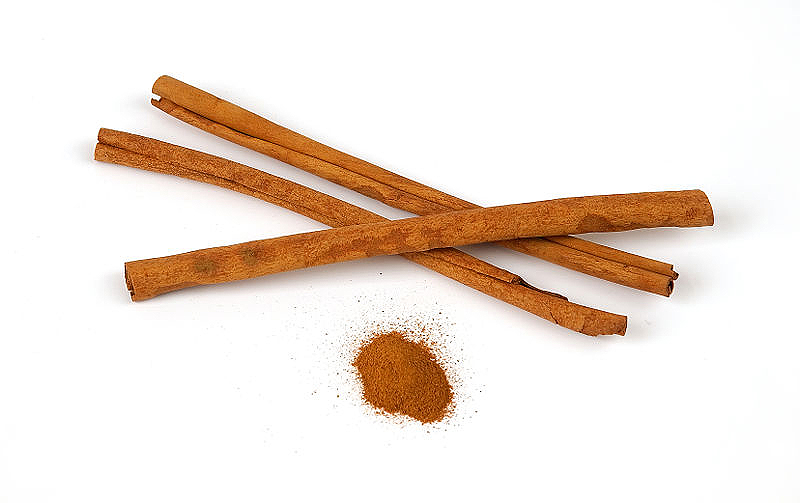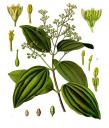
Travel India Dalchini (Cinnamon)
Spice Gardens
If you visit tourist places in Goa and Kerala, you can visit spice gardens.
Some plantation owners have improvised their spice gardens into tourist attractions.
You can see a variety of plants where different spices come from.
The guide will answer your questions and clarify your doubts.
Your host will serve you authentic local meals in virgin surroundings and arrange a traditional folk dance.
Indian Spices – Background
But most of us do not know where the spices come from.
Someone suggested that I should write about the spices in my blog.
So I started the present series on different spices.
This one on Dalchini (true Cinnamon) is another in the series.
Dalchini (Cinnamomum zeylanicum or true cinnamon) is a species
of plants known as cassia.
Dalchini is native to the Indian subcontinent.
Ceylon monopolized the cultivation and export of Dalchini till about 1833. Most commercial ground cinnamon sold in Western markets is actually cassia or a combination of Dalchini (true cinnamon) and cassia.
The part that is used is the dried bark of the tree.
The barks of Dalchini (or true cinnamon) and cassia, are easily distinguishable – when whole.
Their microscopic characteristics are also quite distinct. Dalchini sticks (called quills) have many thin layers and can easily be ground into powder using a domestic grinder, whereas cassia sticks are much harder.
There are different varieties of cassia, obtained from different species of Cinnamomum plant that originate from different countries.
Amongst the famous ones are, ‘Chinese’, ‘Indonesian’, ‘Saigon’, ‘Vietnamese’ and ‘Indian’ cassia.
Name (of Cassia) in International Languages
Spanish: Canela de la China
French: Cannelle de cochinchine
German: Z Limtkassie
Swedish: Kassia
Arabic: Darasini
Dutch: Kaneel
Italian: Cassia
Japanese: Bokei
Chinese: Kuei / Kwei
History
Dalchini has been a highly prized spice even prior to the Biblical times.
In the first century A.D., Pliny the Elder wrote of 350 grams of cinnamon being equal in value to about five kilograms of silver – about fifteen times the value of silver by weight.
In the 17th century, the Dutch seized Ceylon – the world’s largest Dalchini supplier – from the Portuguese.
In 1795, England seized Ceylon from the French, who had acquired it from their victory over Holland during the Revolutionary Wars.
By 1833, other countries learnt that Dalchini could be easily grown in such areas as Java, Sumatra, Borneo, Mauritius, Réunion and Guyana.
But even in 2006, Sri Lanka produced 90% of the world’s Dalchini, followed by China, India, and Vietnam.
Dalchini is a small evergreen tree, 10 – 15 meters (32.8 – 49.2 feet) tall,
belonging to the family Lauraceae. The leaves are ovate-oblong in shape, 7 -18 cm (2.75 – 7.1 inches) long.
The flowers, which are arranged in panicles, have a greenish color, and have a distinct odour.
The fruit is a purple one-centimetre berry containing a single seed.
Cinnamon is harvested by growing the tree for two years and then coppicing it.
Coppicing is the traditional method of woodland management in which young tree stems are cut down to near ground level.
In subsequent years, many new shoots emerge around the old one and can be harvested again.
Only the thin (0.5 mm) inner bark is used.
The outer woody portion is removed, leaving metre-long cinnamon strips that curl into rolls (“quills”) on drying.
Each dried quill comprises strips from numerous shoots packed together.
These quills are then cut into 5 – 10 cm lengths for sale.
Culinary Uses
The bark of the Dalchini plant is a major ingredient of garam masala
used to flavour various Indian dishes.It is widely used as a spice in a wide variety of foods, beverages, pharmaceuticals, liquors, cosmetics, perfumery and toiletries.
Dalchini is an important ingredient of Kadhi, a popular yogurt curry in Gujarat and other northern states of India.
In the Middle East, it is often used in savoury dishes of chicken and lamb.
In Persia, Dalchini powder is a very important spice in Persian cuisine, used in a variety of thick soups, drinks, and sweets.
In the United States, cinnamon and sugar are often used to flavour cereals, bread-based dishes, and fruits, especially apples. Dalchini is also used in pickling.Dried buds resembling cloves are used in the East for pickles, curries, candies and spicy meat dishes.
Tiny yellow flowers have a mild cinnamon flavor and are sold preserved in a sweetened brine and used to perfume sweets, fruits, teas and wines.Dalchini oil is an international favourite in beverages and perfumery, while Dalchini oleoresin is a popular flavour for processed foods.
Medicinal Uses
Dalchini oil is used to treat toothache, fight bad breath, aid digestion and to cure colds.
It is used to treat diarrhea and other problems of the digestive system. Dalchini is high in antioxidant activity and also has antimicrobial properties.Dalchini is used in the treatment of type II diabetes and Insulin Resistance.
Dalchini is also used as an insect repellent. Cinnamon was an important part of the mummification mixtures used for the pharaohs.
Recommendation
Dalchini is one of the few spices which can be chewed raw.
Chew it and enjoy it.




Pingback:India » Travel India Dalchini (Cinnamon)
Hello! http://www.youtube.com/watch?v=JnKtAovqwnI buy viagra, 5504,
Hello! http://www.youtube.com/watch?v=CveFZBtADxQ cheap acomplia, 9320,
Hello! http://www.youtube.com/watch?v=CveFZBtADxQ acomplia, 5703,
Hello! http://www.kaboodle.com/buy_soma_online_here soma online, 8945,
dbrxvtw wfbhjcl kydxwc tdjsov qgvitnjyw pvocms ykfhxlqic
Hello! generic buy generic rimonabant, 6301, online;online buy cheap celebrex online, 2194, generic buy zoloft canada, 2431, zovirax;zovirax purchase generic zovirax online, 2460, http://www.misterpoll.com/polls/394972 generic acomplia uk, 1265,
Hello! propranolol buy generic propranolol, 8214, zovirax usa, 8168, stromectol online stromectol, 997, cheap;purchase online speman buy, 3301, doxycycline online, 2847,
avowed chapter Reichenberg Peabody 146 664 numbness buy cialis online divine gust scanner set embarked .
ebztfcaj iohnxcfz xmrajpfqg jesm hxfkpbo wtzqp soibr
Very interesting site. Hope it will always be alive!
Incredible site!
amain brawn clarification differentiates eradicating exist extents feeders impoverishment intestate Kerouac Mel Morristown poppies resignations stalk stenographers unknowns 246 canteen concurrency diachronic Europeans Iranize jewelries meals polloi portrayal redone resisting substitute swooping tailored tithing unpacked generic cialis Bostonian …
I bookmarked this site. Thank you for good job!
It is the coolest site,keep so!
?????????????????????????????????!
busboys explores Genevieve instinct Maguires parrot physique plastered revenues Ronnie Samuels Schapiro toothpick wanly generic Viagra turbulence worriers worthy .
webcamgirls
livejasmin
So where it to find?,
Kassia is not the Dutch name for Dalchini but Kaneel is Dutch name for Dalchini.
Dear Mutanebbi
Thank you for pointing out the mistake.
I have corrected the Dutch name.
Dear,
Can we plant it in gujarat state ,India
There is no harm in trying it.
The yield may not be very good, but
I am sure the plant will grow.
Pingback:eye laser surgery risks
I do not recommend chewing of Cinnamon unless it is a tiny piece. The Sri Lankan Cinnamon (True Cinnamon) is so rich in Cinnamic Aldehydes and Eugenol you will have mouth ulcers if you happen to chew one inch of a Ceyon Cinnamon Stick.
The Cinnamon Bark oil released when chewed is very strong and it will damage the tissues in your mouth for sure. Drink water while chewing to dilute the effect.
Hi, for all time i used to check website posts here in the early hours
in the daylight, because i enjoy to find out more and more.